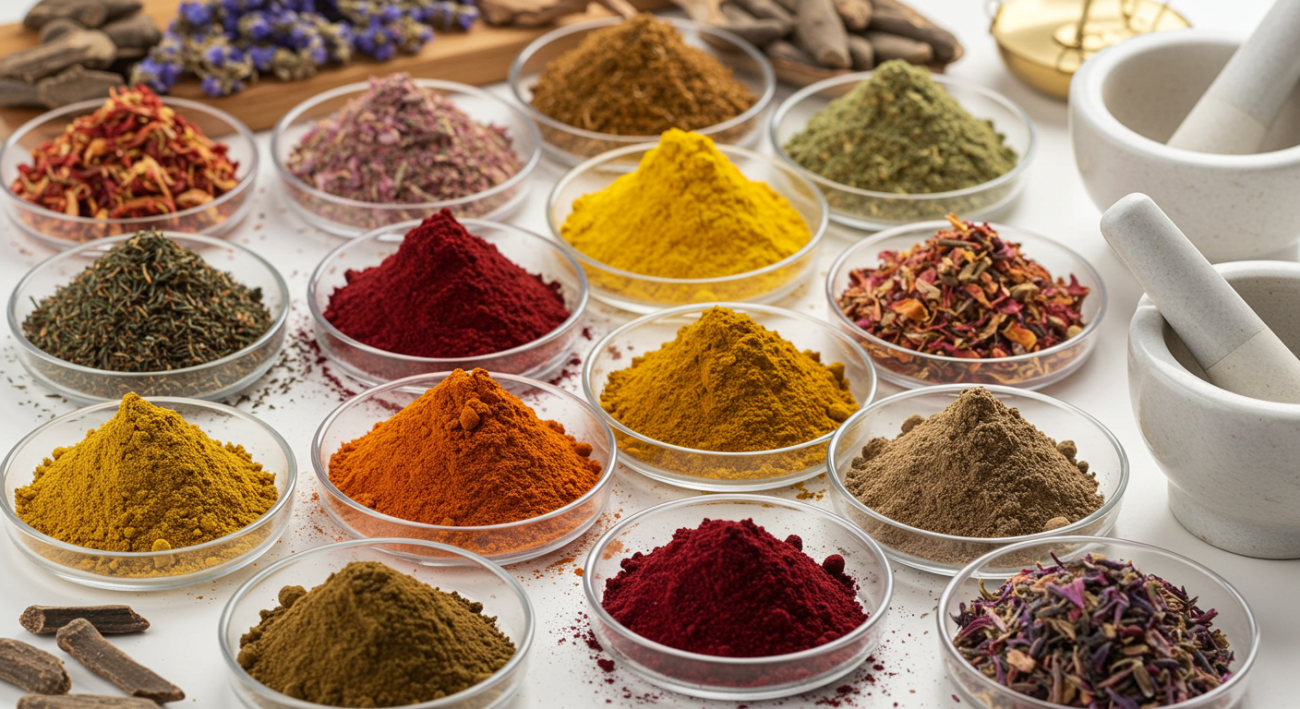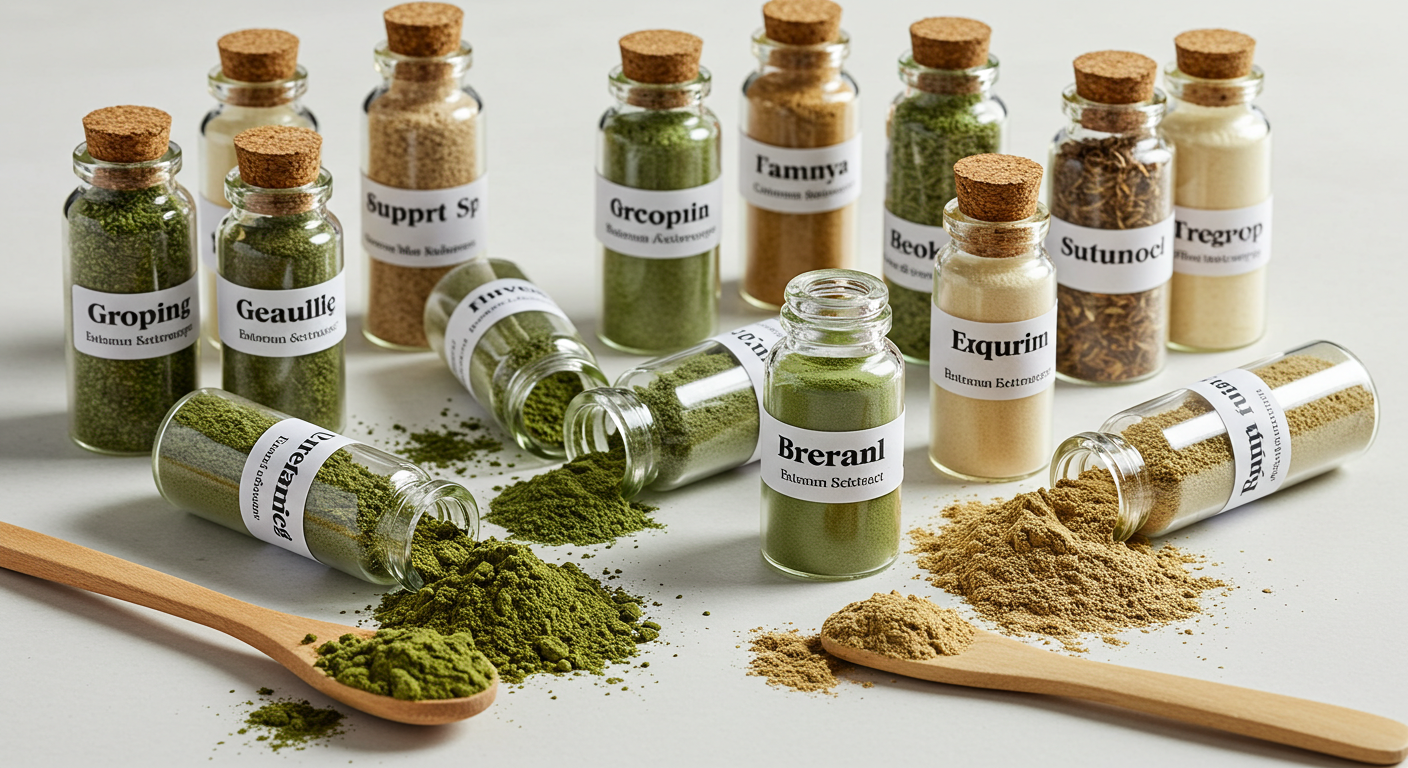Hot Water Extraction – Trusted by Tradition, Perfected by Technology
The hot water extraction method is one of the oldest practiced methods in China and is still widely accepted in TCM. This process involves the simmering of herbs in order to gain water-soluble phytochemicals such as polysaccharides, glycosides, and saponins. It works best for certain mushrooms such as Ganoderma (Reishi) and Astragalus, and Cordyceps, and more for fibrous roots and barks.
- Our advanced systems for boiling and extracting herbal compounds ensure complete elimination of unwanted substances while maintaining delicate bioactive components. In our laboratory-grade herbal extraction facilities, we control temperature and pH during the extraction process.
- These extracts represent the herb accurately, which is crucial for ensuring therapeutic efficacy and consistency, especially for hot water extracts used in immune support products as well as herbal granules in the pharmaceutical and nutraceutical sectors.
- Purity, potency, and batch-to-batch consistency are measured in each batch under the strict multi-tiered evaluation protocols, which remain the core approach for the marketed clean-label, solvent-free botanicals derived from plants for wellness industries across the globe.
1. Supercritical CO₂ Extraction
Supercritical CO₂ extraction uses carbon dioxide under high pressure to extract vital metabolites such as essential oils, flavonoids, and terpenes from medicinal plants. It eliminates the need for harsh solvents, providing unmatched stability and potency with botanical extracts that are free from residues.
- Due to its phytochemical safeguarding capabilities, the process is perfect for aromatherapy and nutraceutical oils, cosmetic-grade ingredients. The active compounds are well protected during the CO₂ extraction process, allowing for precise control over the concentration and color of the final product.
- Our laboratories perform HPLC and GC-MS procedures for primary and secondary metabolite confirmation and standardization verification against global norms. Moreover, the supercritical CO₂ extraction technique aids in clean-label formulation and also improves bioavailability as well as therapeutic value.
2. Ultrasonic-Assisted Extraction Fasts, Eco-Friendly
Ultrasonic-assisted extraction is when energetic sound waves are used to extract bioactive constituents from the cell walls. This method is useful for the extraction of certain herbs like those containing large amounts of polyphenols and other delicate substances.
- Moreover, ultrasonic-assisted extraction results in better yield while protecting the molecular structure of the extract because of its shorter time requirement for extraction as well as less solvent use. In extracting liquid food supplements, herbal cosmetic ingredients, and functional food additives, this method is now commonplace.
- Using precision ultrasonic and advanced milling equipment enables us to obtain temperature-sensitive botanical extracts at low temperatures. Laboratory testing for safety and quality is done for each extract. All extracts are certified bioactive and are compliant with local and international standards.
What Extraction Methods are Commonly Used in China?
Because of the ancient history of herbs in China and modern biotechnology, they have become one of the leading producers and manufacturers of herbal extracts. In Chinese factories, phytochemicals and ancient decoctions from Traditional Chinese Medicine (TCM) are converted through a myriad of extraction methods. These methods are aligned with local herbal knowledge as well as modern world standards.
What extraction methods are commonly used in China? This article aims to answer that question by focusing on the most common approaches in China regarding the extraction methods for nutraceuticals, cosmetics, pharmaceuticals, and functional foods.

Why China Leads in Herbal Extraction Innovation?
China uniquely marries ancient practices with modern age scientific advancement, making it one of the world’s superpowers in herbal medicine and herbal extraction technology. Bolstered by the extensive resources in Traditional Chinese Medicine (TCM), China actively advances the industry by investing in modern manufacturing facilities, laboratories with GMP certification, and advanced extraction technologies.
- Chinese manufacturer, B-Thriving, concentrates on supercritical CO₂ extraction, ultrasonic-assisted methods, and enzyme-assisted processing due to their efficient R&D. These methods also preserve bioactive flavonoids, polysaccharides, and volatile oils. This means cleaner and more potent standardized extracts are available to global pharma, nutraceuticals, cosmetics, and functional foods.
- In addition, having thousands of medicinal herbs bolsters China’s botanical industry. Alongside a diverse ecosystem, the strict proprietary tailored COA, third-party lab compliance tests, and factory audit COAs make China a quality control powerhouse meeting international standards, FDA, EU GMP, and ISO.
- China still holds the crown for unrivaled innovation in large-scale OEM herbal extraction manufacturing. Holistic approaches paired with modern technologies establish China as a top producer of botanical ingredients.
Compliance Ready and Export-Ready
Documents from Chinese suppliers include:
• U.S FDA
• EU REACH
• ASEAN & GCC registration
• China Export Health Certificates
Upon request, supplementary documents such as third-party lab tests, sustainability reports, and complete batch traceability can be provided.
Selecting the Right Extraction Method
Achieving the desired quality, strength, and efficacy of herbal products requires choosing the right extraction procedures. This begins by assessing the nature of a plant’s active ingredients. Are they soluble in water like polysaccharides, or fat-soluble like essential oils? This will determine if hot water, ethanol, or CO2 extraction will be most appropriate.
- Also, consider the end use. Gentle methods supercritical CO2, are often used for skincare products to preserve sensitive aromas and active compounds. However, nutraceuticals may require high-concentration materials that can be provided by ethanol or ultrasonic extraction. The sufficiency of these methods does impact other forms, such as better control over active compound standardization.
- Most importantly, consider the compliance requirements for the target market, as different countries have varying safety thresholds for purity and solvent residue. At B-Thriving, our specialists will help you choose the best extraction methods customized for your formulation.
- For us, clean-label botanical oils, functional food actives, and monomers require precision and compliance at every stage of production and therefore necessitate rigorous clean-label compliance, precision, and quality at all production stages.
Conclusion
What extraction methods are commonly used in China? They include hot water decoction, supercritical CO₂, and ultrasonic extractions, which mix tradition with innovation. Understanding these methods aids in strategy development for formulating a clean-label dietary supplement, cosmetic-grade serum, or a functional beverage. China extraction solutions offer broad customization to meet diverse global needs through compliance, cutting-edge technology, or Chinese extraction technology. B-Thriving offers expertly crafted application-ready herbal extracts designed to enhance and naturally elevate your brand. We invite you to partner with us.

